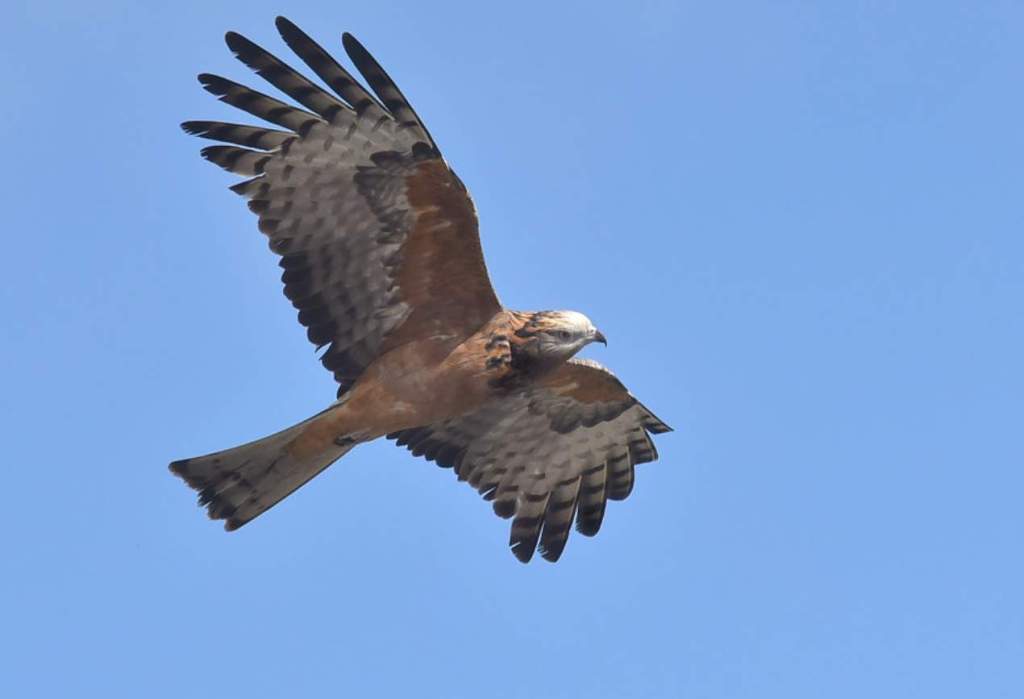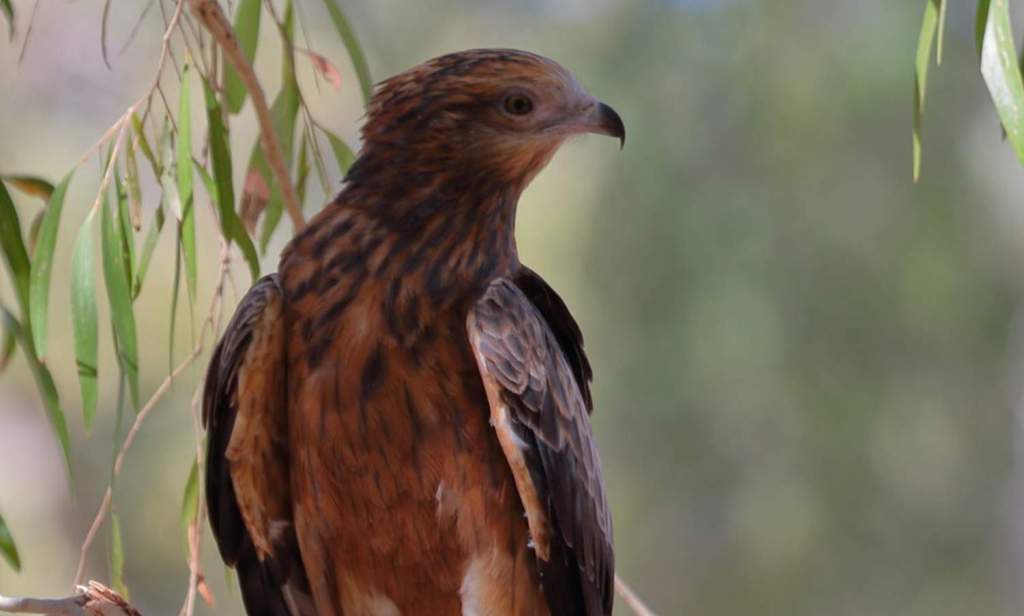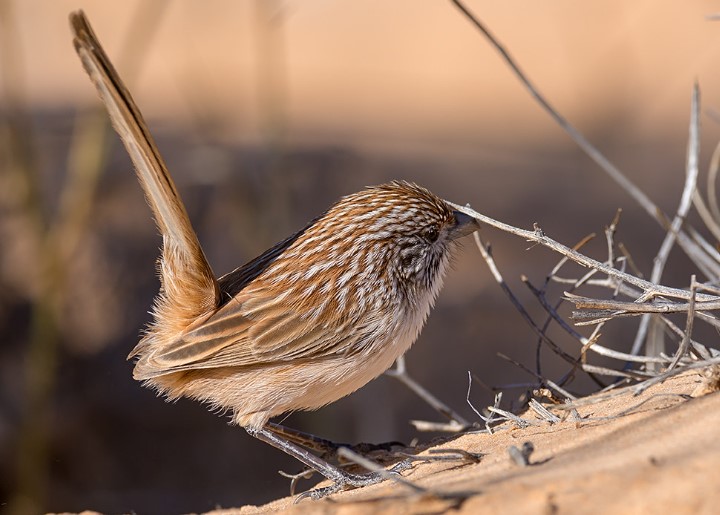This long-winged, square-tailed kite (Lophoictinia isura) hunts like a harrier. In contrast to harriers, it skims and circles the tree tops rather than quartering fields and steppes. The majority of its prey is live small birds, insects, and reptiles. In most cases, this is honeyeater nestlings that the kite picks off from the outer foliage. When it flies past nests, it swoops and dips to pluck young from the nests. Prey is rarely taken on the ground, and carrion is rarely found.
It flies buoyantly and maneuverable on slightly up swept wings, flexing and rotating its wing tips, and continuously twisting its square-cut tail from side to side. They sometimes soar high on thermal air currents; when they flap for momentum, their movements are deep and leisurely. Toward the tip of each wing are dull whitish ‘windows’ that aid in identification. Calls of square-tailed kites are quick quavers, yelps. However it is usually silent.
In spite of their widespread distribution across much of Australia, Square-tailed Kites are not abundant anywhere in the country. It is common for these birds to live solitary or well dispersed in territorial pairs, even when they are in their preferred habitat – an open eucalyptus forest or woodland. Most nests are used year after year, and pairs are probably permanent. The female carries the majority of the burden when it comes to building and incubation.

The female may only leave the eggs to hunt, and the male will relieve her when she returns. As the young grow older, she stays to roost at the nest and brings fresh green leaves each morning for lining and tends to the young by brooding them and passing on food from the male. When nestlings learn to feed themselves, she may leave briefly to hunt on her own after eating food brought by the male.
The male does most of the hunting and rarely stays at the nest, dropping the food and leaving quickly. As he flies off to hunt, alarm calls ring off from other birds which may hurry him if he enters their territories. Within a radius of about 200 meters of the nest, however, the kites are free of attack. Birds that they prey on also nest within that zone, in mutual tolerance. Although resembling a kite in appearance and a harrier in hunting.
The Square-tailed Kite seems related instead to the eagle-like Black-breasted Buzzard. Moreover, similar to the buzzard, its juveniles are russet streaked with dusky, its eggs are heavily marked, and its feet are covered with distinctively fine reticulate scales. Yellow, tipped black; cere buff. Feet and talons yellow-brown, without feathers; claws black. Generally speaking, the immature bird is Russel-brown in color. Head and underparts are finely streaked with black; upper parts tinged brown; rump off-while. Eyes are hazel to brown. Down young are whitish.
Nesting period is July-October. The nest is about 600 mm long and one meter wide. The nest is made of sticks brought by both birds; usually lined with eucalyptus leaves. Generally placed on thick horizontal branches in eucalyptus trees 10-26 meters above ground.
Square-tailed Kite lays 2 or 3 eggs; coarse-grained, boldly spotted and blotched with red-brown, purple-red or pale purple-grey; rounded-oval to oval, about 53 x 38 mm. The incubation period is about 36-42 days, mainly in females. Young fledged in 8 to 10 weeks.
Square-tailed Kites are thinly distributed through the open eucalyptus forests, woodlands and sand plains of coastal and sub coastal mainland Australia. Least rare in southwest, north and north-east; more irregular in south-east and inland. Nomadic, but established pairs may be sedentary. There is no race.
Read More – Brahminy Kite (Milvus Indus)







